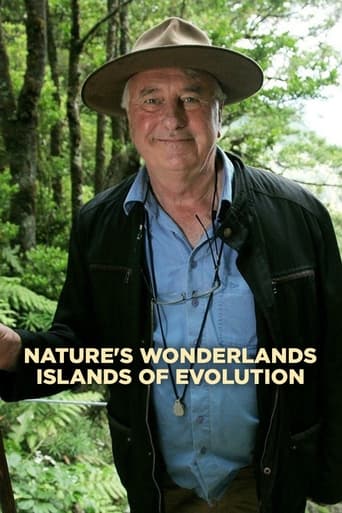Nature's Wonderlands: Islands of Evolution Season 1

Three-part series in which Professor Richard Fortey investigates why islands are natural laboratories of evolution and meets some of the unique and remarkable species that live on them. Examining some of the crucial influences on natural selection that are normally overlooked - like geology, geography, isolation and time - the series reveals that there is much more to evolution than 'survival of the fittest'. Charting the lifecycle of islands - from their birth and colonisation to the flowering of evolutionary creativity that often accompanies their maturity, and what happens when an island grows old and nears its end - Fortey encounters wild lemurs in the rainforest of Madagascar, acid-resistant shrimps in the rock pools of Hawaii, and giant wolf spiders in Madeira as he searches for the hidden rules of island evolution.
Watch NowWith 30 Day Free Trial!
Nature's Wonderlands: Islands of Evolution
2016 / NR
Three-part series in which Professor Richard Fortey investigates why islands are natural laboratories of evolution and meets some of the unique and remarkable species that live on them. Examining some of the crucial influences on natural selection that are normally overlooked - like geology, geography, isolation and time - the series reveals that there is much more to evolution than 'survival of the fittest'. Charting the lifecycle of islands - from their birth and colonisation to the flowering of evolutionary creativity that often accompanies their maturity, and what happens when an island grows old and nears its end - Fortey encounters wild lemurs in the rainforest of Madagascar, acid-resistant shrimps in the rock pools of Hawaii, and giant wolf spiders in Madeira as he searches for the hidden rules of island evolution.
Watch Trailer
With 30 Day Free Trial!
Nature's Wonderlands: Islands of Evolution Season 1 Full Episode Guide
In the final episode, Richard Fortey travels to Madeira to examine what happens to a volcanic island as it nears the end of its life cycle and starts sinking back into the sea. Here, in the island's laurisilva forest, he examines the remains of an ancient forest that once carpeted all of Europe, finds island lizards that live to be four times older than their mainland counterparts, and meets a huge wolf spider. With the help of local divers, he also discovers an unexpectedly rich marine habitat populated by whales, dolphins and unusual deep-sea species that have much to tell us about the changing nature of our seas.
Professor Richard Fortey travels to the rainforests of Madagascar - an ancient island that has spawned some of the most extraordinary groups of plants and animals anywhere in the world. From beautiful Indri lemurs, toxic frogs, and the cat-like giant mongoose called the fossa, to evolutionary oddities like the giraffe-necked weevil and the otherworldly aye-aye, he uncovers the secrets of the evolutionary niche - examining how, given millions of years, animals and plants can adapt to fill almost any opportunity they find.
In the first episode, Fortey is on Hawaii to investigate how life colonises a newly born island. According to some estimates, Hawaii has been successfully colonised by only one new species every 35,000 years due to its remote location - yet the Hawaiian Islands teem with a great diversity of life. In search of the evolutionary secrets of how one species becomes many, Fortey encounters beautiful honeycreeper birds whose evolution rivals that of Darwin's famous finches; carnivorous caterpillars who now can't eat leaves, and giant silversword plants that thrive in parched volcanic soil at 10,000 feet.
Free Trial Channels
Seasons


























